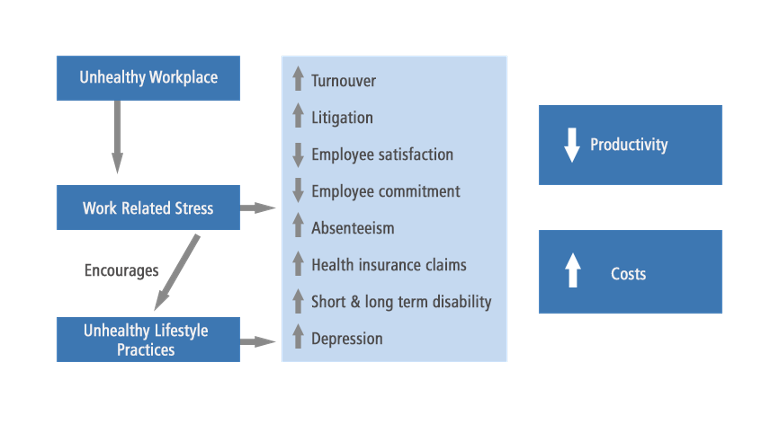The U.S. workforce has drastically changed over the last few years. While some workers are in-person, others are fully remote, and another subset are doing both—a hybrid workplace where the amount of time working remote and, in the office, can vary from day-to-day and week-to-week. These workplace policies can provide flexibility for workers but may also create difficulties. Some remote workers may feel isolated and less connected to their team. Others may find that the lines between personal life and work life can become blurred, or that they are working too much.
According to the American Time Use Survey, in 2021, 38 percent of employed persons did some or all their work at home and 68 percent of employed persons did some or all their work at their workplace. These numbers are up from 2019 data where workers were less likely to work at home (24 percent) and more likely to work at their workplace (82 percent). As workplace arrangements have changed, so have the boundaries between work and home. As a result, many workers feel accountable 24 hours a day, seven days a week. Since more workers are able to work from home for at least some part of their week, many have also not felt justified in using vacation time.
This constant focus on work chips away at mental well-being. Compounding the problem, a National Bureau of Economic Research study suggests the workday has gotten longer for those working at home, and that peak work emailing times are starting earlier in the day and ending later, resulting in worker fatigue.
Decreased alertness from worker fatigue has been a factor in industrial disasters such as the 2005 Texas City BP oil refinery explosion, the 2009 Colgan Air Crash, the explosion of the space shuttle Challenger and the nuclear accidents at Chernobyl and Three Mile Island.
Fatigue can cause weariness, sleepiness, irritability, reduced alertness, impaired decision making, and lack of motivation, concentration, and memory. Studies have shown that fatigue is linked to health problems such as:
- Heart disease
- Stomach and digestive problems
- Musculoskeletal disorders
- Reproductive problems
- Depression
- Some cancers (breast and prostate)
- Sleep disorders
- Poor eating habits/obesity
- Worsening of existing chronic diseases such as diabetes and epilepsy
Moreover, some remote workers feel isolated and lonely because they are no longer making daily trips to a physical workplace where their face-to-face interactions with co-workers anchor them to a community. The following offer examples of actions that some organizations have taken to address these concerns:
- Establish mental health days.
Some employers have introduced monthly or quarterly mental health days to combat employee burnout, specifically instructing staff to use these paid days off to step away from their work tasks and prioritize their mental health. Coined with a variety of names (e.g., Take a Break Day, You Day, A Day for Me), these extra days are not allocated as extra vacation days because anxious workers may feel they cannot justify taking vacation time. The key is to set specific dates for these mental health days and encourage workers to take advantage of them, so they feel it is acceptable to unplug for the day and take care of themselves without guilt since everyone else in the organization is also doing so at the same time.
- Set and respect boundaries.
Some workers feel they must communicate around the clock to prove they are being productive. Employers can automatically reduce workers’ stress levels by being upfront about expectations and letting them know they are not required to check and respond to emails during all hours of the day. Consider encouraging workers to establish “quiet hours” where they turn off email notifications during the evening and weekends. Managers and supervisors can set a good example by scheduling their own “quiet hours” and by refraining from communicating during non-business hours to show that it is acceptable to unplug during certain parts of the day.
- Plan social gatherings.
Providing opportunities and platforms for workers to interact with each other will help keep them connected to their co-workers and the organization. Consider coordinating activities/gatherings, such as virtual book clubs, lip sync battles, trivia games, team coffee breaks, holiday gatherings, hobby chats, music jams, and online games. The goal is simple: have fun and give co-workers an opportunity to connect and get to know each other better, either by doing something playful (like playing a game of “Guess Who,” where co-workers submit random facts about themselves prior to a virtual meeting and the team guesses which fact matches which person) or something more focused, like asking the team to pick a mental health topic to explore or share their personal stress-reduction strategies. Events can be spontaneous or planned. For example, organizations could hold “Keeping Connected” sessions once or twice a month to give workers a chance to talk and share tips on staying active and other mentally healthy activities.
Work stress in males and females
Gender can also influence stress at work. A WHO (World Health Organization) commentary on gender disparities in mental health revealed that just as gender influences a person’s social position, status, and treatment in society, so it affects what gives men and women stress and how they react to it.
Work that does not allow for skill discretion and decision-making authority contributes most to depression and is more prevalent than the lower one’s rank. As women generally earn less than men and more often occupy the lower ranking positions in organizations, they are more prone than men to work-related stress.
“However, stress does differ depending on the industry sector. For instance, in the construction industry, according to a study published in the Journal of Management in Engineering, men appear to experience slightly higher levels of stress than women,” says Dr Fong Yuke Tien, Senior Consultant of Occupational and Environmental Medicine at Singapore General Hospital (SGH), a member of the SingHealth group.
“Men in this industry appeared to suffer more stress in relation to risk-taking, disciplinary matters, implications of mistakes, redundancy, and career progression. Female engineers in the construction industry, on the other hand, stressed more over opportunities for personal development, keeping up with new ideas and business travel.”
The cost of doing nothing ….see below:

Spencer-SHE has been providing Safety, Health, and Environmental Compliance Guidance since 1980. Let our team proactively assist you in the prevention and reduction of workplace stress.
Contact us here to help you to develop and maintain a safe and healthy workforce.
Sources:
https://www.osha.gov/workplace-stress/solutions/hybrid-workplaces
https://www.uml.edu/research/cph-new/worker/stress-at-work/financial-costs.aspx

